
Featured Blog | This community-written post highlights the best of what the game industry has to offer. Read more like it on the Game Developer Blogs or learn how to Submit Your Own Blog Post
Wonder Boy: The Dragon's Trap: Reverse engineering an 1989 original: the quest for accuracy
A short blog where we explain the sort of low-level techniques we used to investigate the original game code and understand how the game worked.

Hello! This is Omar from Lizardcube, now based in Paris, France. I am the technical director and programmer for our upcoming game Wonder Boy: The Dragon’s Trap. The game is a remake of a 1989 Sega/Westone cult classic action-adventure early metroidvania-style game for which we acquired a licence from the original developers. It is getting published by DotEmu.
Cursed into a half-human, half-lizard monstrosity by the Meka-Dragon, a lonesome adventurer is facing the challenge of a lifetime! In search for a cure, our mutated anti-hero will explore the many traps of Monster Land and defeat many stuff-throwing, curse-wielding dragons. How many more transformations can one hopeful body survive as it turns into a Lizard, a Mouse, a Piranha, a Lion, and a Hawk The six different forms of our shape-shifting hero make up the cast of this non-stop action-adventure platformer!
Here's how the new game looks (June 2016 reveal trailer)
This post is a cross-post from our development blog which was intended to be read by a large audience. So even though it the subject matter is overly technical we are just trying to skim the surface here. I thought it would be cool to try to explain and convey some of the aspects behind making the game.
When we decided to remake The Dragon’s Trap, one of the primary goals we set for ourselves was to make a game that is faithful and respectful to the original in terms of gameplay. We want players to feel “at home” (home being Monster World!) when they hold the controller. That means that we need to be particularly accurate in terms of controls and gameplay mechanics. We want the timings, physics, and reactions to feel just right and not like a cheap remake.
That might seem overkill to you - if that game wasn't your childhood. Imagine making a remake of say, the original Zelda, Metroid or Mario. You simply aren't allowed to get those wrong! Remake Super Mario Bros straying away from its original physics/timing and there is a guaranteed riot in front of your offices.
The Dragon's Trap is our childhood and we wanted to treat it with the same amount of respect and precision that the Nintendo classics would deserve.
The original game also has lots of unknowns, e.g.
How are hit points calculated?
What are the rules behind item drops?
What are the rules behind potion refills?
How are hit boxes animated?
Why is there a Cyclops in that underwater box?
What equations are driving the character physics?
Have we even found all the secrets…?
We don’t want to replicate all of it by guesswork and lose some the original magic due to translation. I was also curious to understand with more precision how older 8-bit games were made. So I went and started digging into the original code…
How to extract the game data (the hard way)
My plan was to do this thing right and start from the beginning. I took an original game cartridge and dumped it to extract its contents. Those who know me from retro gaming forums may know I have an obsession for old Sega 8-bit games. That’s the sort of thing I do to my cartridges for breakfast:
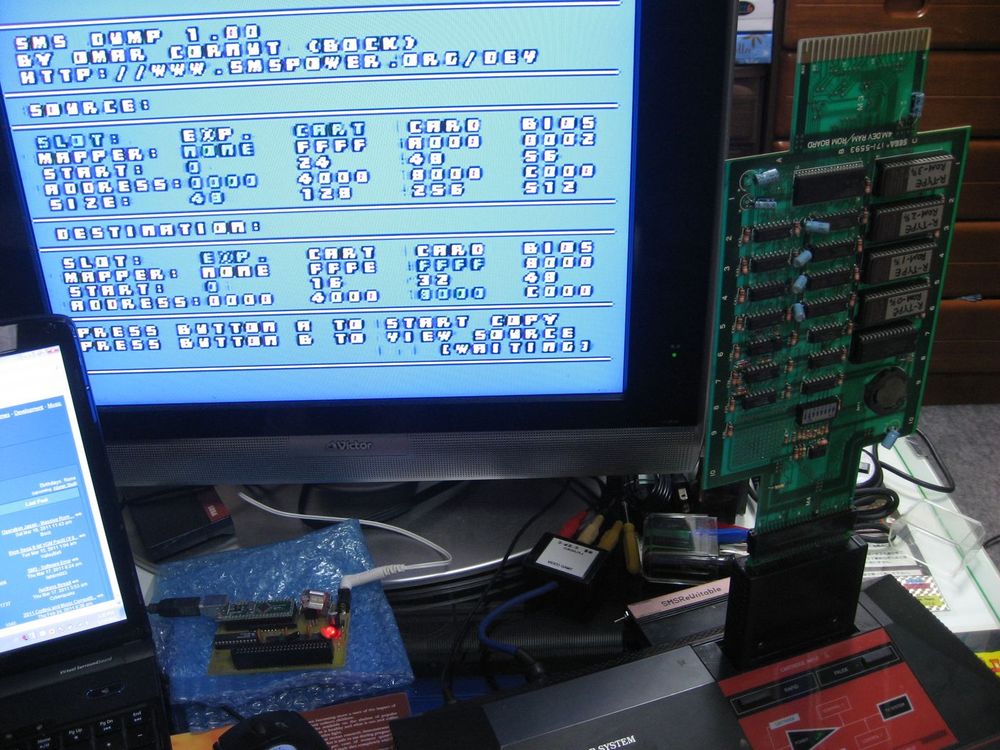 Dumping a prototype cartridge
Dumping a prototype cartridge
(Pictured above, for dramatic purposes, is a prototype version of R-Type. It comes on a bulky long board that the developers used in 1987 (Compile made this version!). I plugged the board into a homemade adapter as this is a Japanese console. The back of the console exposes an extension port originally designed for potential accessories (which never saw the light of day). We used it here by plugging a custom-made gender adapter as well as a writeable cartridge on it, carrying a simple software I wrote for the Master System, in Z80 assembly. The software runs on the console, copies itself into RAM, then resumes execution from there. The code in RAM then deactivates the cartridge it booted from, reads the game cartridge data (here my R-Type prototype, but the same process works with our Wonder Boy III cartridge), reactivates the writeable cartridge (plugged in the back) and writes the game data to it. The writeable cartridge is battery-backed and can be unplugged while keeping its content safe. I then proceeded to unplug everything and could then read the cartridge back from my PC using a custom made SmsReader. Reading the original cartridge from the console itself ensures we access it with the same timings a real Z80 CPU would use, maximizing compatibility for cartridges that might require precise timings. All those weird custom pieces of hardware have been designed and built by members of the SmsPower community such as Mike Gordon and Charles MacDonald.)
So we’ve extracted the data from the original game! The data fits in a 256 kilobytes file, AKA 262144 unique bytes. We can examine them with an hex-editor but it won’t make a lot of sense at first:
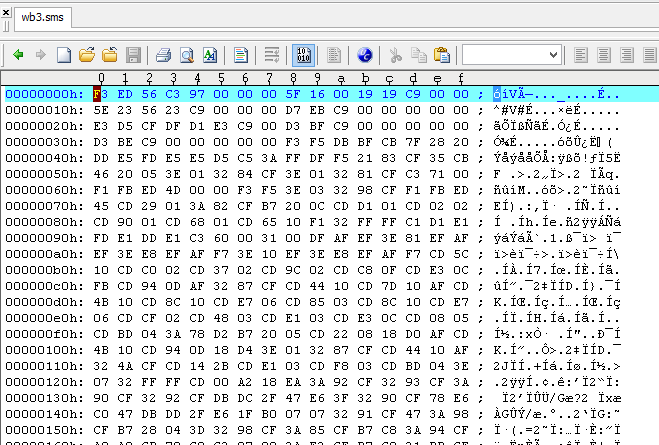 Hexadecimal dump of the original game data
Hexadecimal dump of the original game data
Reading the code
All the details of the game are there, albeit studying them isn’t really a trivial task! Some of those bytes are program code (in Z80 assembly), some are game data. We can’t easily tell which is which, nor what the format is for all this data. Old video games didn’t use standardized engine or data format, and everything was custom-made by programmers for a given piece of hardware. For the purpose of learning how the original game worked, it was my job to decypher this. We call this process Reverse Engineering!
I used a disassembler to convert the binary data into Z80 assembler code. This is what Z80 code looks like:
029C: 21 AC 02 ld hl,02ACh 029F: 11 6C CF ld de,CF6Ch 02A2: 06 14 ld b,14h 02A4: 7E ld a,(hl) 02A5: EF rst 28h 02A6: 12 ld (de),a 02A7: 23 inc hl 02A8: 13 inc de 02A9: 10 F9 djnz -07h (02A4h) 02AB: C9 ret 02AC: 26 80 ld h,80h 02AE: A2 and d 02AF: 81 add c 02B0: FF rst 38h 02B1: 82 add d
It’s not easy to read! Even after learning about the Z80 CPU instructions set and how to program on a Z80, we are left with disassembled code where most of the offsets/numbers/addresses (such 02ACh or CF6Ch) have no explicit meaning. So we have to learn how the Master System hardware works. With the help of an emulator coupled with a debugger, such as MEKA (by yours truly), we can step in the code while it is running to examine the machine state. Our goal will be to find what each of these addresses contains, and what each piece of code is used for.
I first had do a lot of guesswork to start untangling this mess. By looking at individual blocks of code, trying to understand what they do, I could start roughly labelling them (“this function at address XXX might be used to control movement of the crabs”). By looking at RAM memory dumps while the game is running, I slowly managed to build a bigger picture of where the game stores its data (“variables for the player are stored around address XXX”, “variables related to scrolling may be there”, etc.). By hacking into the ROM I could test hypotheses as to how the game handles its data. I could then trace how levels are stored in-engine while the game is running, back to how they are stored in ROM on the cartridge itself (often following steps of unpacking and decompression, as ROM wasn’t cheap back in the days and storage had to be reduced).
Rinse and repeat for weeks, then months. It was a long and tedious process but eventually things started to converge and allowing me to build a much more detailed understanding of the game logic. Being able to extract all the level data meant I could confirm the location of secret doors. Studying code meant I could understand what drives the item drops and attack logic. In order to understand the game physics, one of the techniques I used was to capture and graph various memory locations while the original game was running. I built a custom emulator and added all sorts of memory visualization and hooks:
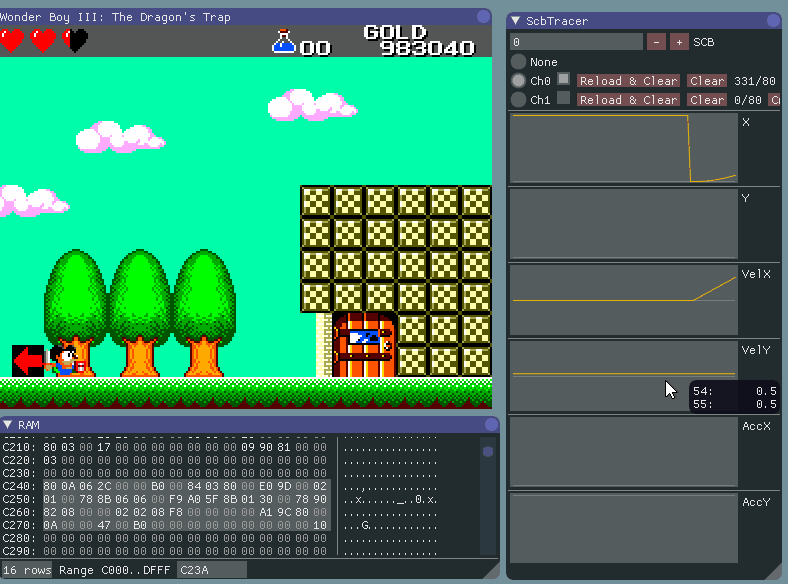 This graphing tool plots values in memory at runtime
This graphing tool plots values in memory at runtime
With all things adding up, this allowed us to start developing a new game with a good level of understanding in regards to how the original worked. Of course, we will stray away from the original! We want the new physics to be smoother, as the original only ran at 30 FPS. For the new version we are doubling that. We want to go from 4:3 ratio to widescreen. Armed with that knowledge we can be certain that we won’t overlook details from the original. So when we make other changes and additions to the game, we will make them intentionally and not accidentally.
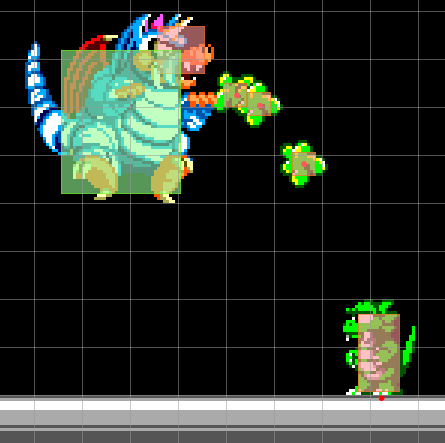
Visualizing collision boxes for different characters
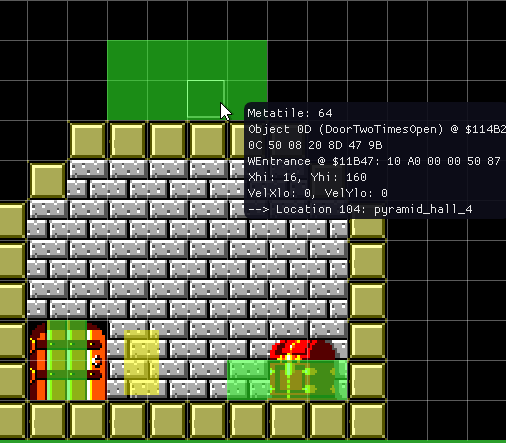
Visualizing the position of game triggers/events
While this is only a small part of the work involved to create a new game, it was a necessary first step to achieve our target. Laying out this knowledge foundation means that our new game will be able to follow on the footsteps of what made the original great.
Only from there will we be able to make an even greater version!
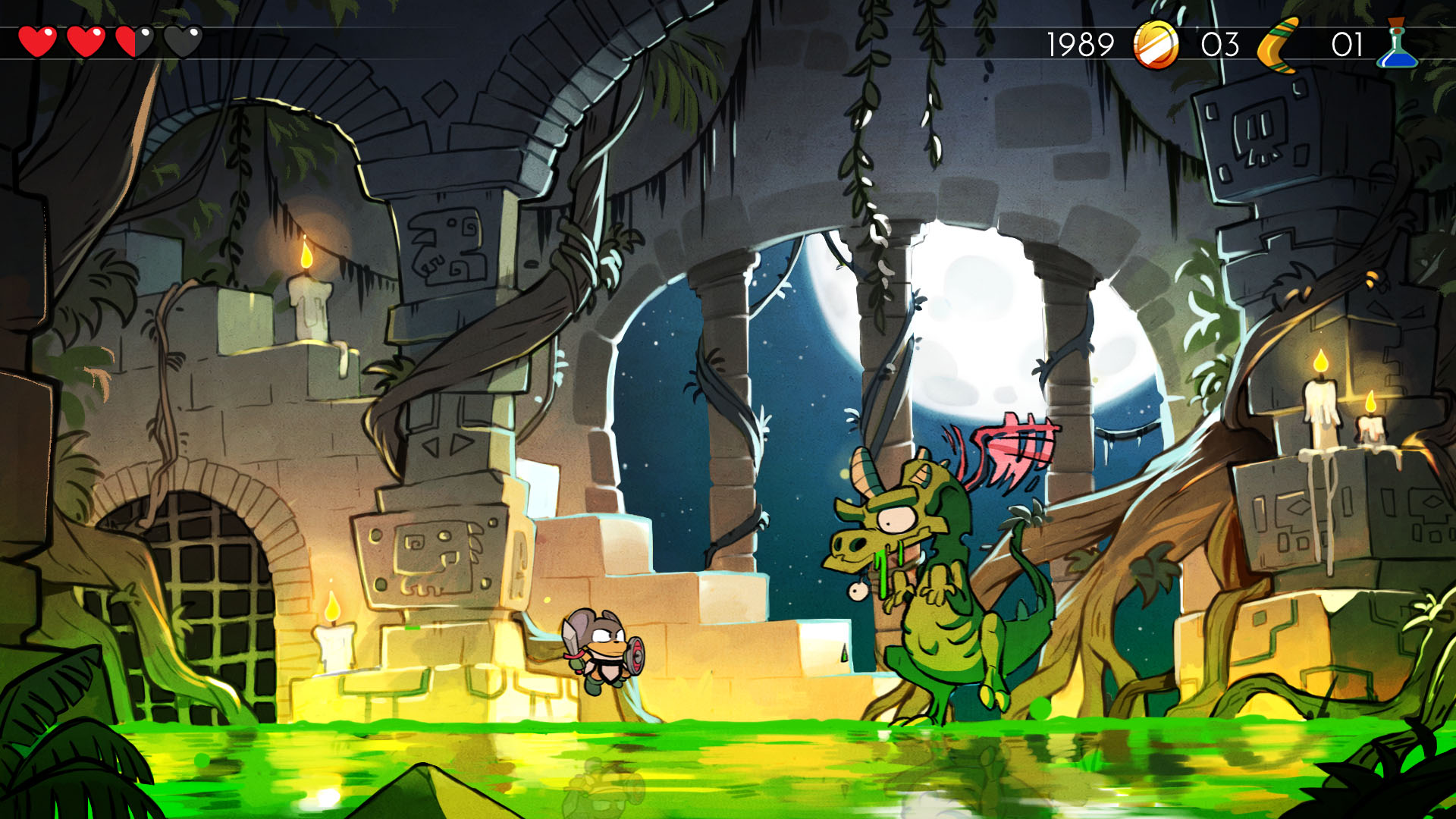
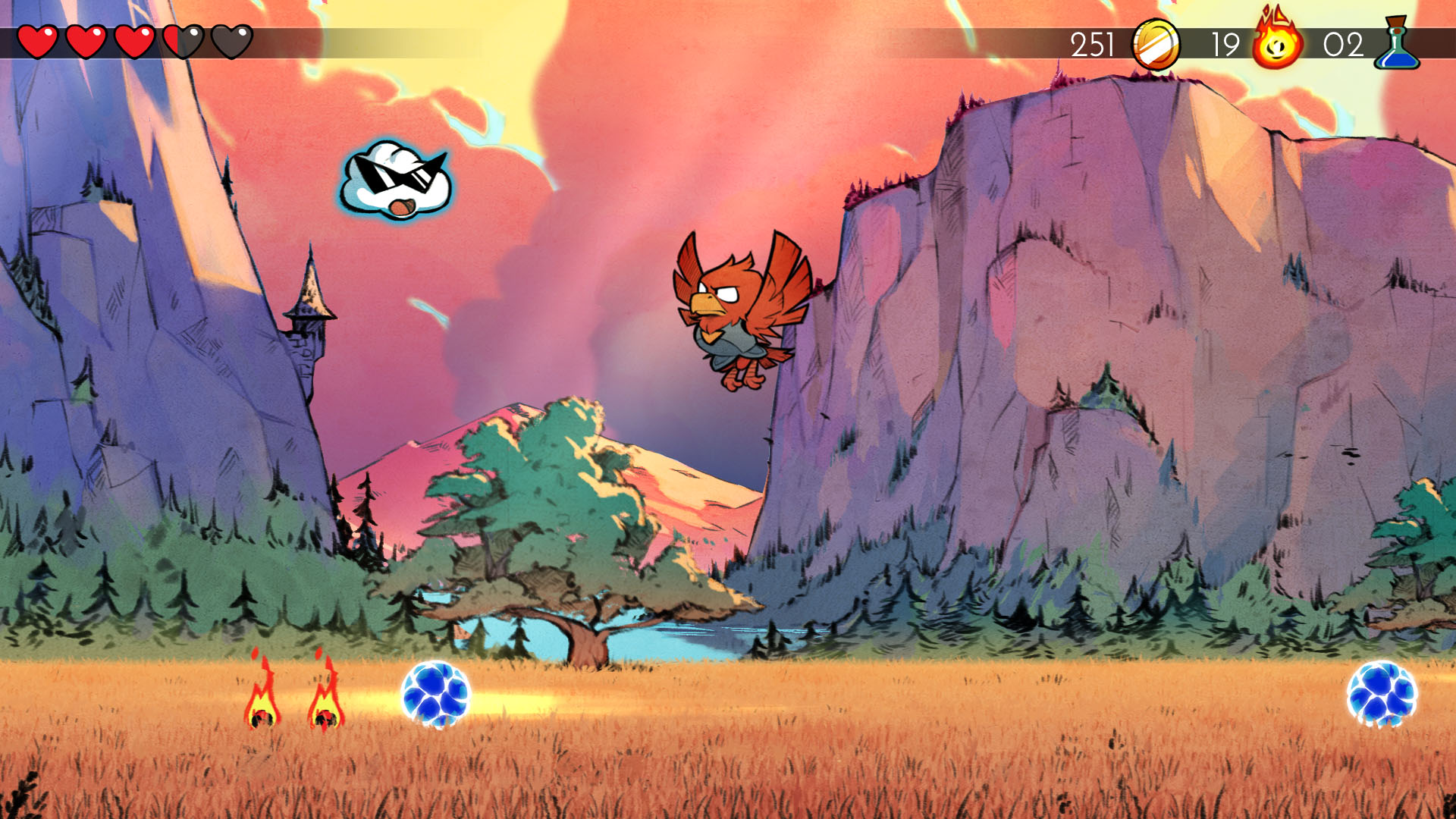
Thanks for reading this short blurb. You can follow us on Twitter @lizardcube Web http://www.TheDragonsTrap.com etc. where we'll make sure to shove ever so important information about the game down your internet lines!
Read more about:
Featured BlogsAbout the Author(s)
You May Also Like







.jpeg?width=700&auto=webp&quality=80&disable=upscale)








